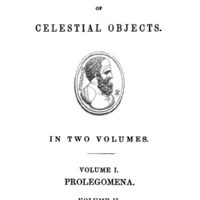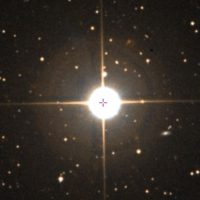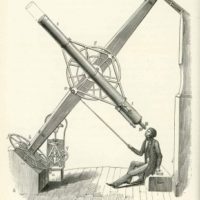As an evening pastime in these COVID restricted days I have been delving into the past again. Again reading the work of an amateur astronomer from long ago.

I had previously read through the work of Rev. Thomas Webb, a vicar and amateur astronomer active in the late 1800’s. Webb frequently refers to the work of a yet earlier observer, Capt. William Henry Smyth.
Retired British Navy Captain Smyth was a backyard observer, gazing at the stars with a 150mm refractor from a garden behind his home in Bedford England. His telescope was quite good for the time, made by Tully of London, the best money could buy. This telescope was eventually purchased by the British Government to be used in the 1874 transit of Venus expedition to Egypt and the 1882 Venus transit in Jamaica. It now sits in the collection of the Science Museum, London.
Smyth published two volumes on astronomy in 1844 under the title A Cycle of Celestial Objects . Volume II of this set, commonly called The Bedford Catalogue or The Bedford Cycle, contains descriptions of more than 850 double stars, clusters, and nebulae, serving as a guide to what may be observed with a small telescope. The Bedford Catalogue became the standard at-the-telescope reference for other amateur observers for many decades until it was generally replaced by Webb’s Objects for Common Telescopes.
Smyth’s descriptions are wonderful to read. He was a skilled observer, well educated, familiar with the current thinking and latest theories into the astronomical knowledge the 1830’s. He relates those theories in his descriptions, giving us a glimpse into the history of astronomy, and better appreciation for what we know today.
A good example is Smyth’s description of the obscure double star 55 Andromedae observed in December of 1832…
A most delicate double star, on the Lady’s right leg, about 3° from γ Andromedæ, a little south of the line from that star towards β. A 5½, yellow; B 16, bluish. This is No. 1094 of H.’s Fourth Series, and designated by him “a fine specimen of a nebulous star.” It is singular that it was marked nebulous by Flamsteed, in the British Catalogue, perhaps in consequence of some small stars near it. It sometimes had a burred aspect to my gaze, and the companion was only caught by intense attention, and then only by evanescent glimpses, being a minimum visibile for my telescope: its position and distance are therefore only estimated. Is the intense blue which some of these mere points of light present, an optical illusion? Pigott suspected A of variability.
The acolyte of this object being of the last degree of faintness, it was necessary to apply that singular method of obtaining a view, viz. to avert the eye, and direct it to another part of the field. H. accounts for the success of this stratagem, by supposing the lateral portions of the retina to be less exhausted than the central ones.
Object LXX, A Cycle of Celestial Objects Vol II, The Bedford Catalogue, William Henry Smyth, 1844
Smyth’s description is rich in detail to one familiar with observing at the telescope. These astronomical descriptions are written in the wonderful and rich language of Victorian England, requiring the occasional use of a dictionary to reference some word that has since fallen out of use.
Smyth’s writings are thick with cryptic abbreviations and shorthand references to the pioneering astronomers of the day. The H. referred to above is John Hershel, the famed British astronomer who began what is today the NGC catalog along with his father William and aunt Caroline.

The companion star he is attempting to observe is 13.27 visual magnitude, indeed a challenging object near the limit for a six inch telescope under good conditions. The “intense blue” is, as Smyth suspects, an illusion due to the dimness of the star, photography leaves no doubt of this.
Smyth is also correct in doubting the nebulous nature of 55 And, modern photographic surveys reveal no such nebulosity near the star. This sort of confusion is common in old visual descriptions where the limits of human vision were routinely tested.
The description of using averted vision to perceive dim objects is as useful today as it was two centuries ago. Modern visual observers are quite familiar with the trick and routinely employ it. We now know the technique is dependent on the biological structure of the eye, with the more light sensitive rods being sparse at the center of vision and more dense in the outer retina.
Following in Smyth’s path I have been using the 8″ Astrola to observe many of the same objects. While I have the advantage of 2″ more aperture, vastly better eyepieces, and coated optics… The views are quite comparable to what Smyth describes in his 150mm Tully.


